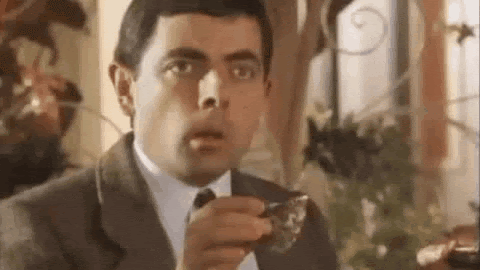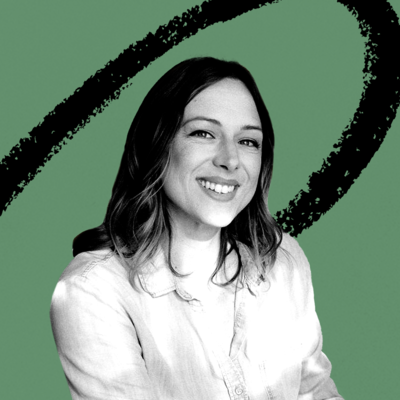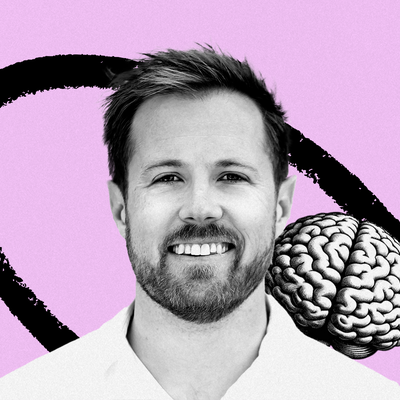
“Follow your heart” is squishy advice.
It’s a Goop headline. It’s a bumper sticker. It’s something you imagine Adam Neumann plastering on custom WeWork shot glasses so he can wax poetic about “elevating global consciousness” in between belts of Jose Cuervo.
“Follow your heart” gets a bad rap, okay?
I think that’s because it is sometimes co-opted by people to mean, “Do whatever you want.” It feels woo-woo and amorphous. It’s associated with a certain kind of unreliable and irrational behavior.
But I don’t think this bad rap is well-deserved. I think “follow your heart” is actually a very good answer — and actually, the only answer — to a certain set of questions that life throws at us.
The problem is that it’s very hard to make it actionable. How do you know what your heart wants?
Let me explain.
. . .
These days I have my dream job.
What I do merges two big sides of me. On the one hand, I have a bit of the sensitive, emotional writerly type inside of me. On the other hand, I have a bit of the ambitious business nerd and programmer inside of me as well.
My current job satisfies both. It’s surprisingly great.
So, the question is, how did I get here? Of course, there was a ton of privilege involved. But I think there were a couple of other things worth talking about as well.
It may seem obvious now that starting a newsletter business was the right thing for me, but it was very non-obvious before I started doing it. In other words, it may seem like I sat down and reasoned through a bunch of different ideas, then settled on one that best aligned with all of my interests, and then started it.
In fact, it wasn’t like this at all. Instead, it was a process that I felt my way through. I didn’t have the answers at the beginning.
As cliche, and weird, and trite, and almost icky as it sounds to say, I followed my heart to get here — zigging and zagging through different ideas until one of them turned out to be the right one for me.
Along the way I also learned that my heart isn’t perfect. That it makes mistakes too. My heart is noisy. It attaches to new things. It swerves towards prestige; it steers me away from guilt. I often have to filter through these feelings in order to allow it to steer me properly.
So I’ve come to a bit of an understanding with my heart. I’ll pretty much do what it says — but I filter it through a framework first. Just to make sure it’s not leading me astray.
Rather than “follow your heart” I’ve come up with a better formulation:
Follow your heart — with caveats.
Some questions require heart-following
Let’s back up.
Last week we talked a lot about being kind to our ideas. About not throwing them out just because they seemed “bad.”
If you’re being kind to your ideas, and you’re committed to working on them, the next logical question is: “Which idea should I work on first?”
A lot of people asked me that question after last week. It’s an interesting one, because it’s the exact one that I had to grapple with in order to find this job — the one I love to do.
So I think I have some authority when I say the following:
There’s no such thing as a bad question, but there are some questions that you’d be better off not asking.
“Which idea should I work on first?” is one of these.
Reasoning and logic generally are shortcuts to finding answers to questions, but sometimes there is no shortcut.
Now, why would that be?
. . .
In computer science the complexity of an algorithm is measured by how quickly the algorithm can be run on a computer.
Programmers get lots of computer science points when they can turn algorithms that solve problems in a “slow” way into algorithms that solve problems in a “fast” way. They do this by finding shortcuts to make the algorithm solve the problem by doing fewer computations.
It turns out, in all likelihood, that certain kinds of problems just can’t be solved any faster. These are problems where the solution has to be brute-forced.
A good example is password cracking. Imagine, for a moment, that you’re a hacker trying to guess a user’s password in the most secure system in the world. How would you get into the system?
Well, you’d have to guess the password. And the only way to do this is make a list of all of the possible passwords (which is an infinite list!) and guess each one in turn.
It occurs to me that some human questions are, effectively, like this as well.
“Which idea should I work on first?” is one such question. But there are many more.
It’s any situation in which you have low information and there are an effectively infinite number of options to choose from.
You can tell you’ve encountered one of these questions when you spend lots of time circling around different answers over and over again. Another way to tell: when you ask your friends what to do and you’re told to “follow your heart.”
That advice is usually not particularly helpful, but what it’s really saying is this:
Trying to answer this type of question by sitting in your room and thinking about it is like trying to guess a password without brute forcing it. It’s maybe possible, but very likely to take many many years and you’d be better off just trying a bunch of passwords instead.
The longer you sit and theorize the further you get from actually finding the answer. You need to get into the brute force business.
And that’s something that I had to learn first-hand.
What to do when thinking doesn’t work
After I sold my last company I took a year off.
I was burnt out and squarely back in the idea selection phase of figuring out my life. I had a list of things that seemed interesting to pursue, but I didn’t know what I wanted to start with.
So I decided to travel and think.
I figured, if I got some space I’d come up with the answer: I’d know which idea to pursue, and how to build the kind of life I wanted. I imagined being in some foreign land drinking tea and contemplating my life when BOOM the idea for what I would work on next would come to me in a flash of insight.
(This is me with a flash of insight)
To effectively midwife this moment, I traveled around the world: I spent a couple of months in Asia, I lived in Milan, I took a road trip around the U.S.
While I was doing it I was reading books like Designing Your Life and Springboard — I figured maybe doing some life-planning exercises might help guide my direction.
It didn’t work.
As I came toward the end of my time off I realized that I had had a lot of a lot of fun and had done a lot of thinking, but I hadn’t found any of the answers I had hoped for. My list of ideas was as long as ever, and I didn’t really know how to sort through them or integrate the pieces of my life that I wanted to integrate.
So, I did something else: just like a computer scientist guessing passwords, I decided to brute-force it:
I decided to follow my heart.
. . .
For two years I spent half my time doing things that were respectable and earned me money, and then spent the other half working on ideas.
Rather than thinking about picking the right one, I just started doing them. Rather than worrying about how to properly prioritize, or weighing each option with a spreadsheet, I just picked one and tried it.
When it didn’t work or I realized I didn’t like it, I went back to the list and picked the next one. I tried so many things that it’s almost embarrassing to talk about. Here’s a list of a few things:
- I tried writing a novel. (Or, rather, I did write a novel — but I haven’t finished it yet. Still stuck on a fourth draft.)
- I tried to build a VC firm that donated all of its returns to charity.
- I tried to build a Roam-like note-taking app.
- I tried to build a service that would compile business knowhow into a universal set of playbooks that could be shared inside of companies and between companies.
- I tried to build an Patreon-like platform to connect artists with super-rich people who could fund their work.
- I tried to build a consulting firm that specialized in helping companies use future of work tools like Slack, Airtable, and Notion
- I tried to build a service that would provide “Notion librarians” to every company to organize all of their information.
- I tried to build a D2C flower company that would specifically sell flowers to men (I love flowers and I think more men should too!)
This is only a partial list. I tried a lot of things. And when I say tried, I mean I actually did some version of the thing: I built a deck, or I built a prototype, or I talked to customers. I pretty much always shipped something, figured out if it would work or not, and then moved on to the next thing.
Each of these ideas had something that genuinely pulled me into them. But over time, having tried lots of things, I began to do something else.
I began to layer a framework on top of my heart-following that helped me make fewer mistakes.
. . .
You can’t write an algorithm to guess passwords that’s “fast.” But you can write an algorithm that’s “faster.”
If you’re guessing passwords you’re always going to be guessing from an infinite list. But you can sort and filter the list so that the passwords that are most likely to work are at the top.
When we’re following our hearts, we do the same thing. It’s a felt process. You scan down the list and find the thing that you’re most drawn to. Then you do it. If it doesn’t work, then you go back to the drawing board.
But what I began to realize as I was testing out different ideas, is that, while I couldn’t predict which one was going to work before I did it, there were a lot of easy ways to eliminate bad candidates.
You see, following your heart is a noisy process. It can be hard to know how you actually feel — it changes a lot, and sometimes you feel a lot of things at the same time.
So I came up with a list of caveats that I could apply to help me sort through ideas. These are designed to help me filter out or deprioritize the messy signals I got from my heart, so that I could avoid making obvious mistakes.
Having a list of caveats made it easier to follow my heart with more confidence.
. . .
Caveat #1: Don’t do anything obviously bad for the world
If I need to explain why you shouldn’t do anything obviously bad for the world, you probably shouldn’t be reading this article. But it’s worth saying — it’ll eat your soul and you won’t enjoy yourself.
Caveat #2: Don’t do anything because it seems like it will be an easy way to succeed
This is a bit more complicated than #1. It’s easy to get tangled up in it.
Sometimes you come across an idea and you think, Oh man this is going to be so easy — the money and success are going to flow in, and when that’s done I’ll go do what I really want to do.
The minute you start feeling that way about an idea it’s a good sign to chop it off the list. Creative projects should be things you want to work on. Not things that you work on because you think they’ll be easy.
Why? Nothing that works is ever easy. It’s always a long road. So hanging your hat on the hope of a quick success is unlikely to lead you to the result you want.
For example, last year I accidentally started a consulting business teaching large organizations how to use future of work tools like Slack, Notion, and Airtable. It’s a long story for another time, but one great client wanted to pay for it — and suddenly I was very bullish on building a company around it. It seemed so easy!
But I was also ignoring the fact that I didn’t really want to run this kind of company. I thought I could get a bunch of clients, outsource the work to other people, and then live off of the income.
Unfortunately, it didn’t work out that way. It turned out that I would need to pound the pavement to build a big Slack consulting firm. And my heart just wasn’t in it.
So I moved on to something else.
Caveat #3: Don’t hop from one new thing to another
We have a big recency bias when it comes to our ideas.
New ideas are shiny and bright and have none of the problems of old ideas. Old ideas have nose hair, and gnarled toes, and they smell when they get up in the morning. We dislike old ideas and we love new ones.
This creates a situation where we’re constantly starting new ideas and never finishing them. Because in the middle of starting them the idea starts to become old — it starts to grow wrinkles and get fat — and we start to fall out of love with it.
Then we throw it out and start the process over again.
What we fail to realize is that every new idea eventually becomes old, and the nose hair of an old idea is actually a good sign: it means that it’s developing.
If there’s any idea that’s been on your list for less than two weeks, bump it down a few notches. Your current excitement about it might give you enough potential energy to get you started, but it won’t help you finish.
Note: Careful here. Just like you can meet someone new and immediately know there’s something interesting about them — you can also meet an idea and know immediately that you’re drawn to it. That’s good; pay attention! What we want to avoid here is flitting from new idea to new idea without giving any one idea much of a chance to succeed.
Caveat #4: Don’t do anything because it will impress the right people
We are social animals, and we have social hearts.
That means our feelings about an idea are going to be affected by what other people think and what other people expect.
One big one is doing something because someone you respect told you to do it.
For example, a good friend of mine called me recently and told me that he was thinking about starting a company in the medical devices space.
“Medical devices?” I said. “Since are you interested in medical devices?”
It turned out that he was really excited about it because a famous investor had been encouraging him to do it. He wanted some advice on whether to go for it or not.
I told him to imagine what he would have done if this investor hadn’t encouraged him to do it. Would he have come to the idea on his own and chased it down no matter what? Or would he have shelved it?
Thinking about it in this way helped him uncover what he really wanted — rather than what would satisfy an investor he wanted to impress.
Creating a vacuum in your mind between other people’s expectations and your decision-making is really important for following your heart. You don’t want to start a company, or write a novel, or make a movie in order to impress someone else. It’s really unlikely to work out.
Caveat #5: Don’t do anything because you feel obligated to
When I was in the middle of figuring out what I wanted to do I started working on an idea for a new notes app with a few friends.
At first I was really excited about it. But over time, my excitement began to wane. It didn’t feel like we were making much progress.
But it felt really hard to disengage — I didn’t want to disappoint my friends.
This sense of guilt and obligation is a really big one for me. It totally affects my evaluation of a situation. But it’s also not a great reason to embark on a creative project.
One of the ways I’ve been able to tell if I’m doing something primarily out of a sense of obligation to someone else is to use the “relief” test:
I imagine that the other person came to me and said, “I don’t think we should do this anymore.” If my anticipated reaction to that event is a sense of relief, then I know I’m holding on for the other person. If my anticipated reaction is sadness or regret — then I know there’s something else going on.
Caveat #6: Don’t do anything irreversible or financially ruinous
This is another one of the obvious ones, but it’s an important filter to have. It’s okay to follow your heart when the stakes are low. If the stakes are extremely high, you’ll probably want to think harder before making the leap.
Do a spreadsheet, talk to smart friends — and try to lower the stakes. For most situations you can find ways to lower the stakes and dip your toe in the water without diving in head first.
Start with that. You can alway swim into deeper waters once you get used to the temperature.
Even with caveats heart-following requires faith
Upon reflection, “follow your heart” is still squishy.
But it’s squishy for a reason — it’s a recognition that no one knows the answer, and that there’s no way to figure it out without trying.
Of course, trying something implies the potential that you’re making a mistake. But in a brute-force process there is no such thing as making a mistake. There is no such thing as wasting time.
The only time that’s wasted is in the time you spend deciding.
In reality, the time you think you are “wasting” is preparing you for the right idea when it comes along.
There’s no guarantees in this process. There’s no way to skip the search process. There’s a lot of luck involved.
But that’s the thing about following your heart — as we ride off into the purple sunrise of a new idea, we do it with the recognition that we’re embarking on a special kind of process. It’s one by which we allow luck and serendipity to seep into and fill the holes in our lives.
It requires a lot of faith.
But in the end, isn’t it better to live with the faith that things will somehow work out than without it?
What did you think of this article?
Find Out What
Comes Next in Tech.
Start your free trial.
New ideas to help you build the future—in your inbox, every day. Trusted by over 75,000 readers.
SubscribeAlready have an account? Sign in
What's included?
-
Unlimited access to our daily essays by Dan Shipper, Evan Armstrong, and a roster of the best tech writers on the internet
-
Full access to an archive of hundreds of in-depth articles
-
-
Priority access and subscriber-only discounts to courses, events, and more
-
Ad-free experience
-
Access to our Discord community







Comments
Don't have an account? Sign up!